Chris Parkin is impressed with this low(er) budget straight-pull alternative to Blaser when he tests the Savage Impulse Hog Hunter rifle.
I do love a totally new rifle. By this I mean not just a new stock, coating choice or barrel option, but a gun from a manufacturer who chooses to up their game and take on a new challenge. The growth of straight-pull rifles is relentless, so I have to take a hard look at this manufacturer’s product when they use one of the industry’s most dynamic marketing terms in their description.
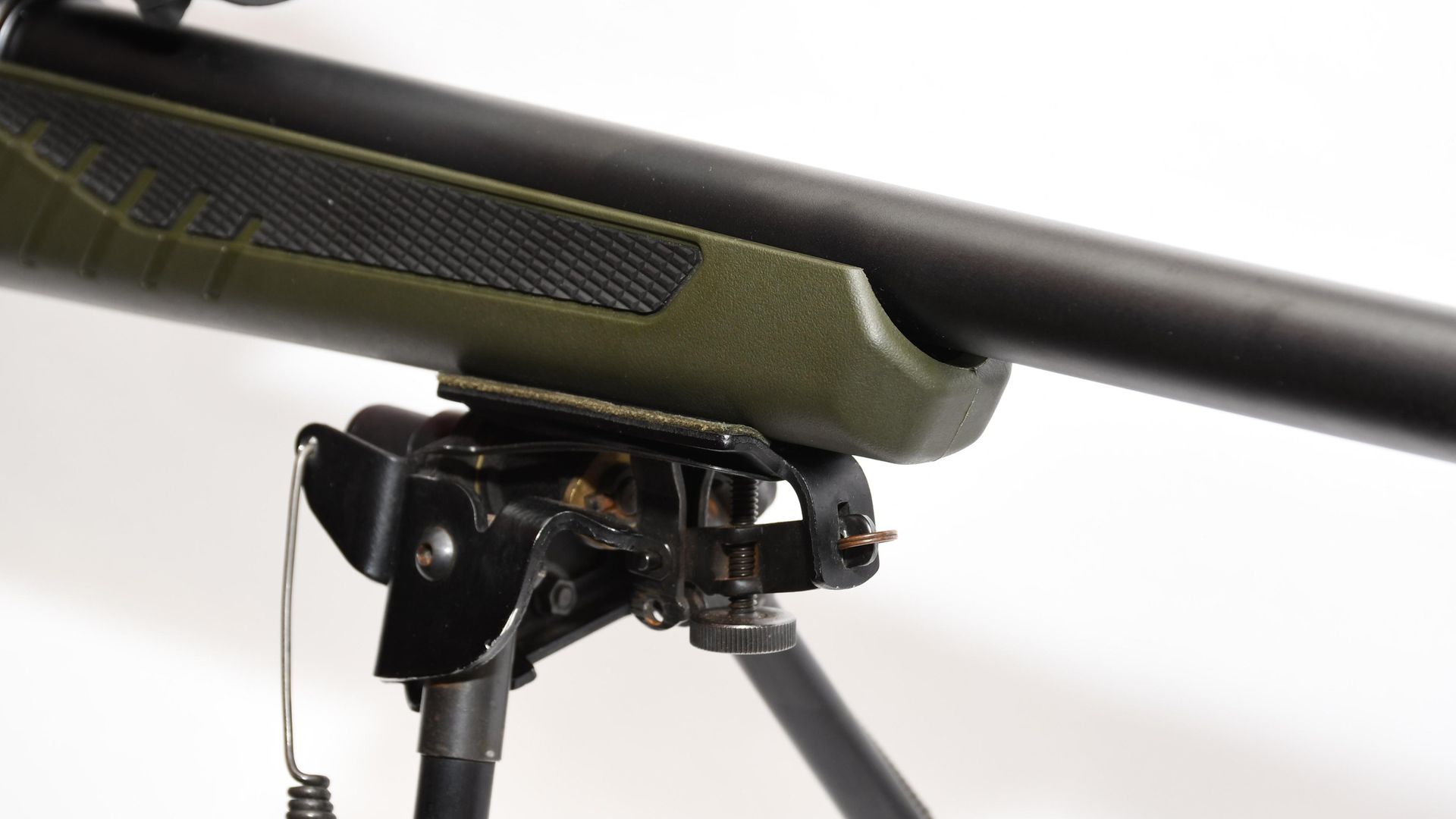 credit: Chris Parkin
credit: Chris Parkin
Complementary elements
The Savage Impulse has, like all other rifles, seemingly taken on elements of rifles we have already seen in the past and combined them with new and improved materials, manufacturing techniques and operational methodologies on the smaller details. So rather than just talking about fast fire and small group sizes, what can Savage offer?
To start with, the barrel is a button-rifled unit of 20"/510mm overall length and 0.746"/18.9mm diameter on this Hog Hunter edition. Other versions are available, and this is an early rifle for the UK market. The muzzle has a 5/8"x24 screw thread and the bore itself has a twist rate of 1 in 8", suiting jacketed bullets up to around 150gr and copper monolithic without issue at 120-140gr weights.
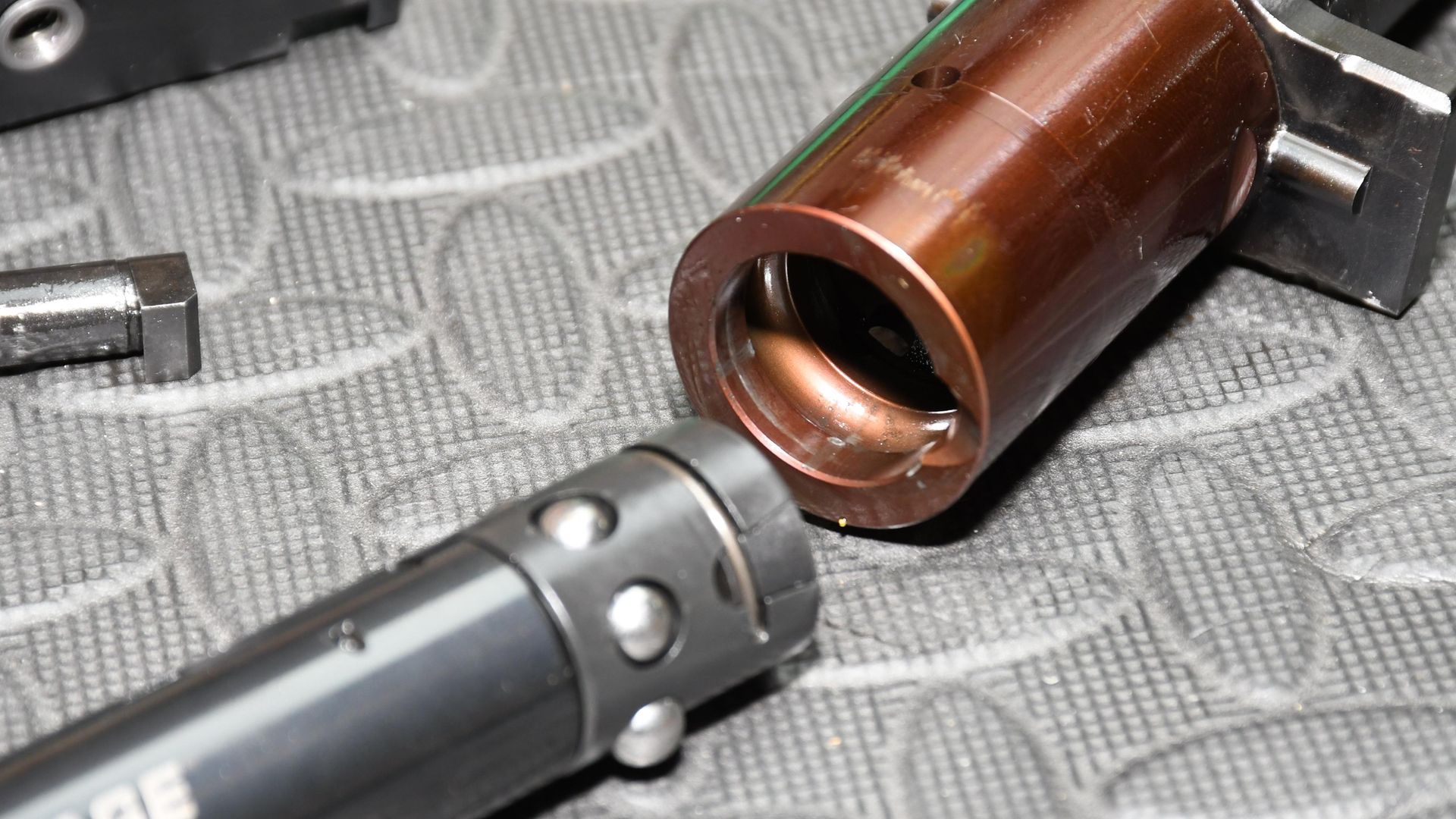 credit: Chris Parkin
credit: Chris Parkin
Barrel mechanics
Entry to the action is where the Impulse shows real innovation, and although a familiar Savage barrel nut is in evidence, ensuring correct headspacing to tight tolerances at the factory using ‘go’ and ‘no-go’ gauges, here is the delight. The action body is hard-anodised, matt-black machined aluminium, and is non-pressure bearing as the barrel is screwed into a steel extension within.
This is clamped to the receiver with three Allen bolts and a locking cross pin to ensure there are no accidental drops even when dismantled. The barrel/extension tenon has teeth that lock the rotational position on the receiver face, and there is an internal shoulder for everything to butt up against, assuring position. All is beautifully machined and slides together with delightful precision and tactile feel. All the Allen bolts spin smoothly into position on well-machined threads. And when torque is applied to tension them there’s no mushiness, just a solid anchored feel.
So how does the action lock? Well, this isn’t a total first, but the recessed bolt face within the removable bolt head is extended from a full-diameter shaft of 0.842”/21.2mm that has six ball bearings held captive around its nose. The bolt has no lugs and simply features a single raceway that prevents rotation and engages the bolt stop, which also acts as the removal catch on the left-hand side of the action’s rear. This offers butter-smooth travel with no chance of stuttering.
At the rear, the handle pivots to lock and unlock the action, swinging back to unlock these bearings, moving forward to push them outward, and locking the bolt to bear firing pressures into a circumferential rebate on the steel barrel extension. This is neat, compact and fast, though it offers no physical camming process to remove the expanded brass cartridge. So how does that work?
Well, this is where Savage really impress me because, like Blaser, they realise that simple linear force on a bolt, regardless of the applied rotation camming force from a bolt carrier, is never quite strong enough. When you have shot as many rifles as I have, you come across a fair number that reveal this basic flaw.
The Impulse, like the Blaser, uses a swinging lever to power a physical plunger, driving the bolt rearward against the rear of the action. Blaser use a bright steel pin/plunger to do this, while Savage use a stouter rectangular plunger. In both cases, this mechanical system, independent of bolt speed, is reassuring and a significant benefit, especially when you want to operate a straight-pull action slowly and quietly.
This single-size action offers a bolt stroke of 115mm to take the larger cartridge chamberings Savage offer, namely .30-06 and .300 Win Mag, as well as the similar length .308. And that leads me on to the next point of interest – can I operate the Impulse with my head on the stock and not smack my face with the bolt shroud?
The short answer is yes, I can, as the bolt shroud is no bulkier than that of a turnbolt action, and with face/cheek remaining on the comb to spot the fall of shot and retain the sight picture it remains just to the tip and right of my (fairly large) nose. It’s good to mention here that the Impulse is supplied with multiple recoil pad spacers and interchangeable cheekpiece inserts to get the best fit possible and this makes for a very comfortable gun. I’m impressed by the attention to detail here, as many other manufacturers seem to completely avoid these factors of rifle handling with turnbolts, never mind straight-pull ‘long’ actions.
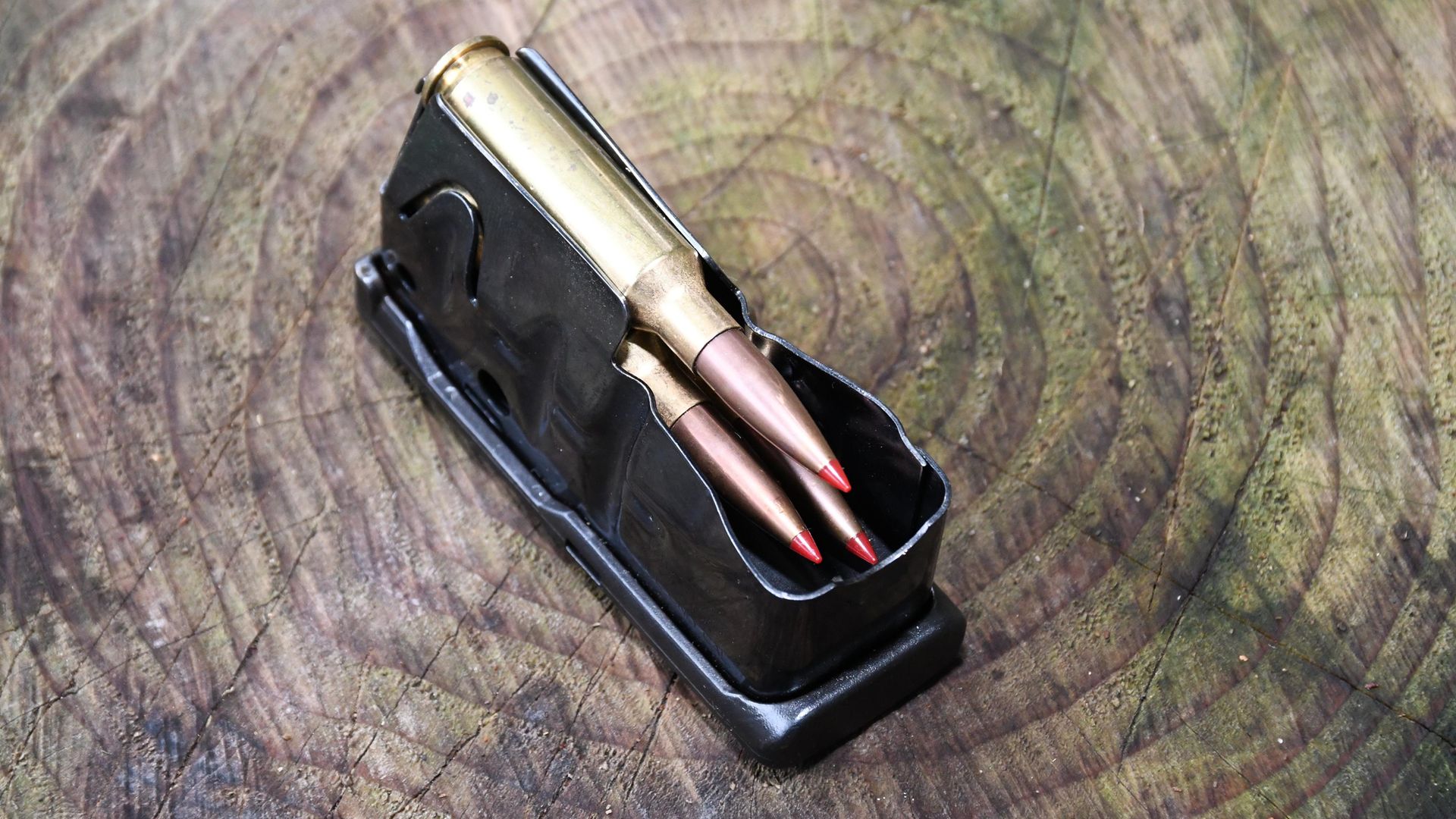 credit: Chris Parkin
credit: Chris Parkin
Feeding time
The underside magazine holds four rounds, plus there’s the one in the chamber you may have pre-inserted. It’s steel with a single column, which presents bullets to the feed ramp smoothly and without bulky abutments to traverse, so you get a damage-free meplat reloading cycle. You can’t top-load the mag through the right-side port like a twin column mag, but at least it won’t wear out anytime soon and spares are available. Plus there is a higher capacity unit in the works.
The underside at the front allows the mag to drop into your palm, and as the stock features a full aluminium chassis within the polymer over-mould, tolerances are retained as designed and there are no snagged entrances or interruptions to the mag dropping freely from its well. Similarly there’s no overly tight insertion or jammed feed caused by the mag’s follower getting crimped.
Dual-side gas-escape ports are shown adjacent to the bolt face to vent gases from failed ammunition, and the upper features a full-length 20 MOA rail machined into the receiver itself, not screwed on. You won’t have any mounting issues and as well as keeping the action itself stiffer overall, it means that if you have need for night vision or thermal mounting with a fixed spacing pair of underside claws, you won’t suffer problems attaining the desired eye relief position.
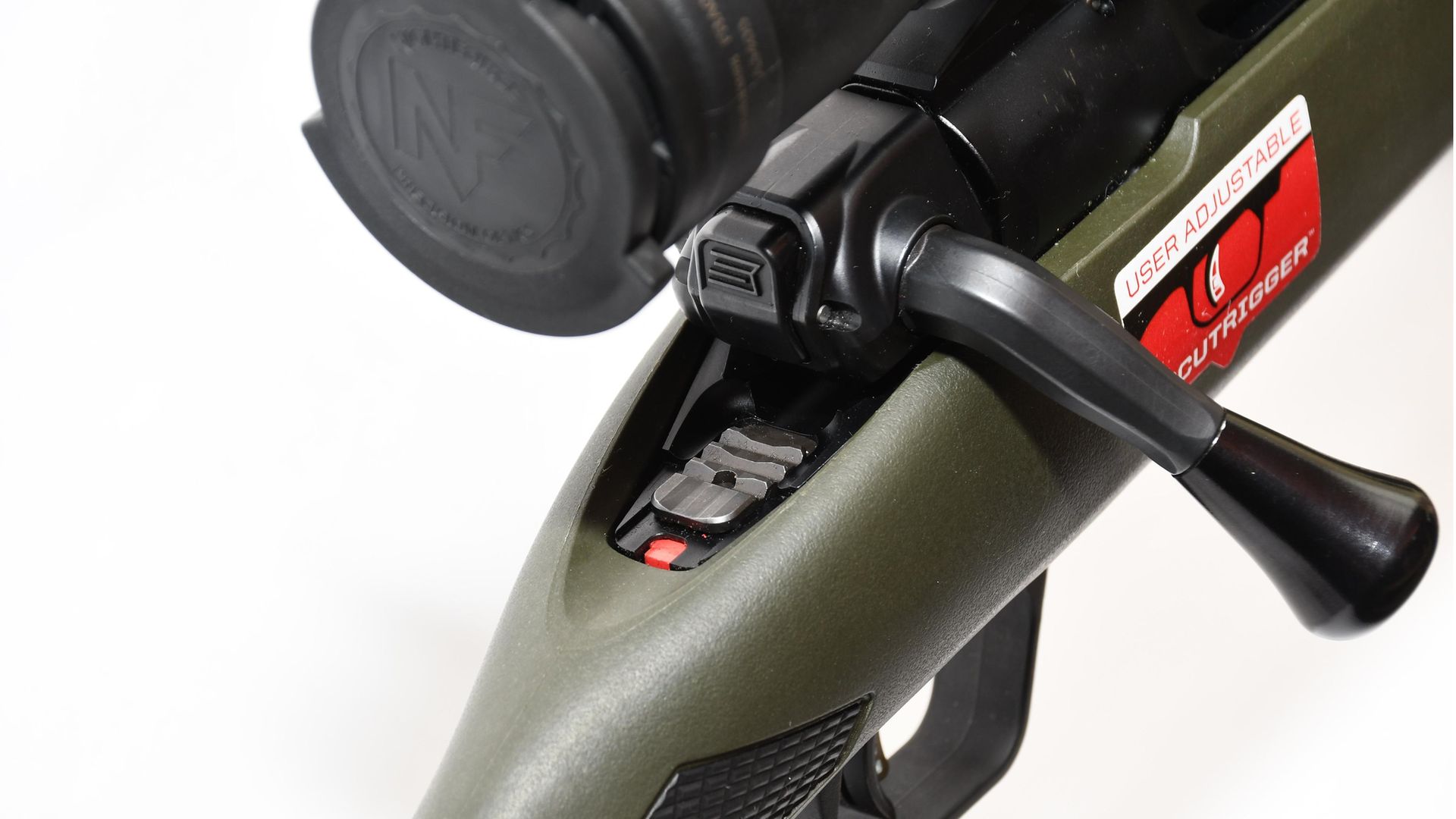 credit: Chris Parkin
credit: Chris Parkin
Action operation
To cock and open the action, the bolt handle swings about 40° with its 65mm steel length tipped by a gently radiused conical handle for comfort. This has been left unadorned and smooth, which you may think slightly odd in the days of endless artistic grips machined into bolt handles, but interestingly it works rather well. The bolt handle can be removed and repositioned, with its inner splined steel core offering user preferences for the angle. And although seemingly rather awkward-looking, being angled forward and outward with the action closed and locked, it works incredibly well as it’s like a reverse taper. Tension locks your hand to it better, rather than letting it slide off the end.
The detail of using bolts is virtually impossible to explain as geometry has an almost unique effect on different individuals. Suffice to say that whereas the Blaser handle is usually a ball tipped out laterally for grip, the Savage is more linear and both work well as their designers have accounted for slight angular changes.
So how fast does it cycle? Well, very fast actually. Extraction is always assured thanks to the shroud/receiver design being forced apart mechanically. Ejection is manual, meaning the exact force applied to the base of the brass to fling it free from the right-side ejection force is proportional to the speed at which the bolt is cycled. The extractor claw recessed on the right side of the bolt’s face maintains a firm grip, and as the bolt travel back it draws that brass over the ejector claw slotting through the left side recess in the face. Job done.
At normal operation speed you get about two feet of lateral throw. At fast speed you get around three feet on a flat bench surface. You actually have to move deliberately slowly to just pip the case out of the side or even retain it in the receiver, which is handy when you are shooting from a bench and want to retain brass for reloading and prevent undesirable case mouth deformation from a sprung ejector slapping the brass hard against the chamber walls as it’s drawn rearward.
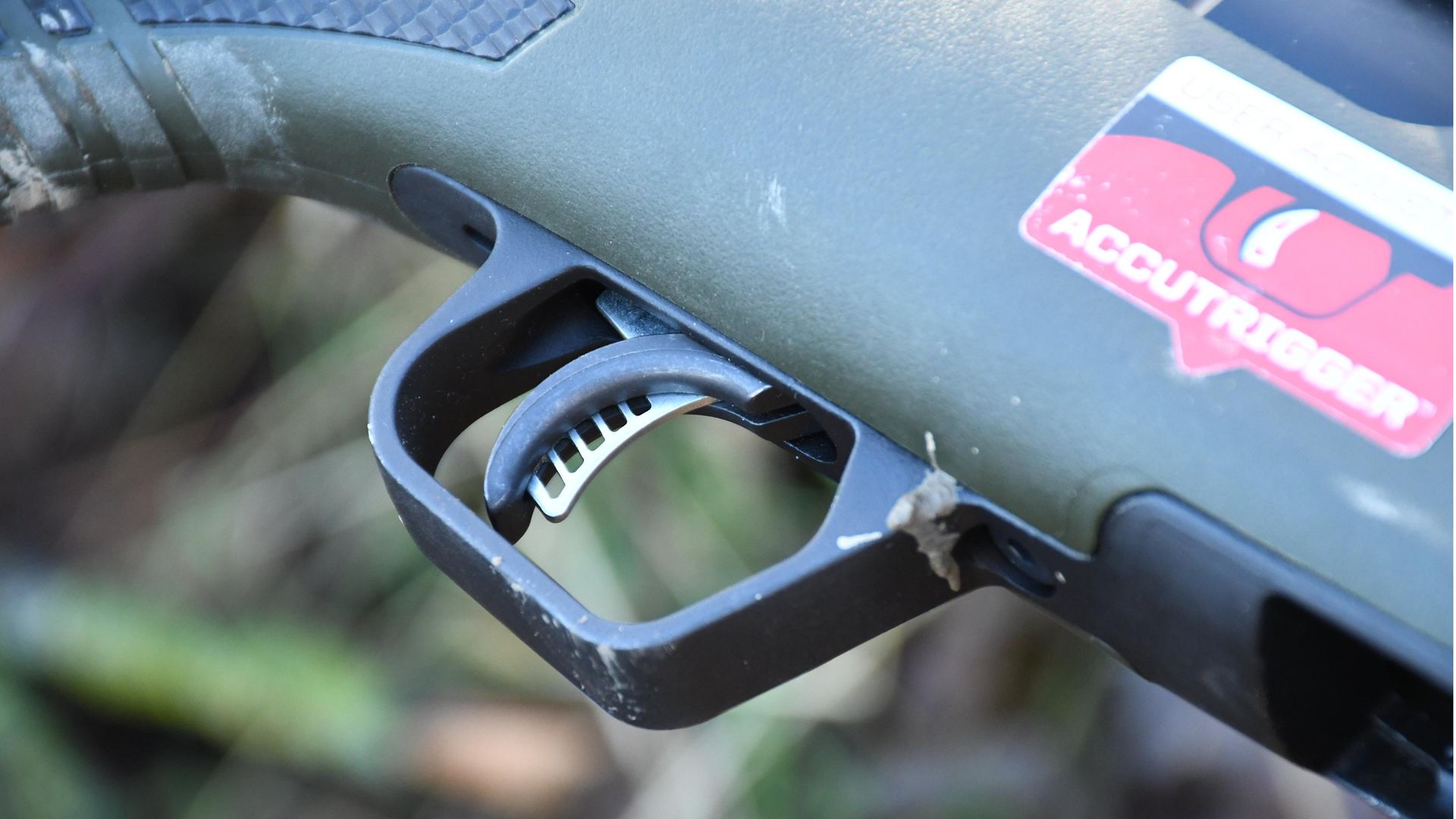 credit: Chris Parkin
credit: Chris Parkin
Operation details
There is a tang safety behind the shroud, which works independently of bolt locking. Interestingly, if the action is ‘fired’ you simply pull the bolt handle and it can be cycled as expected. But if unfired it remains locked and there is a button on the rear of the shroud allowing it to be unlocked. This is a familiar concept to users of many straight-pull rifles, especially those with de-cockers. The Savage doesn’t offer a de-cocking system, but that’s seemingly a more a European hallmark anyway, and you get used to the fact that if the bolt won’t open it’s either a ‘live’ action or the safety is on, so it’s hardly a detrimental factor and you quickly adapt.
A familiar AccuTrigger hangs below in a capacious metal guard. The inner blade has to be fully squeezed to make the trigger ‘go live’ and this is a secure system I have no major problems using as from the overly cautious US market, it allows rifles to have crisp, light triggers without onerous operation force required. This one breaks 90% sharply at 1,135g/40oz with tactile perception of the blade. As always, if you squeeze the curved trigger blade without the inner lever depressed, the trigger will go ‘click’ – totally safe – and you will have to recock the action. I have only had this happen once or twice. Not on this particular gun, but on a Savage Apex foxing rifle in .223 one winter when my bulky glove tended to bunch up and catch it. The rifle wasn’t exactly unsafe, it was more a factor of the glove being cumbersome, to be fair.
Given my delight in ergonomics with the action, the stock almost goes unnoticed in comparison, but it’s worth a mention because it’s a reliable performer. Removing the action via twin screws spanning the magazine well allows it to lift clear, showing the full internal aluminium bedding block and ‘spine’ that continues to the forend sling stud/bipod mount. The barrel fully free-floats in all conditions thanks to this, and the outer copolymer moulded stock in deep green shows grippy facets interlaced with softer black rubber grip panels. Again, you can expect forend walls and an open-radius grip with plentiful reach to the trigger blade.
Polymer ribs are moulded into the front of the grip for a more tactile feel and, best of all, with the soft rubber recoil pad removed you can tap the black comb inserts rearward for their small ‘teeth’ to unclip. They cover a reinforced comb, and you can tune the height for personal taste to suit scope height, face shape and bolt position. These inserts are tall and slender, meaning they actively engage the cheekbone, not the jawline, for improved fit.
There is no undesirable hollow resonance either, as the stock has an internal foam damper to keep matters quiet during the shot or when handled. Recoil on this Creedmoor is minuscule anyway, more so with the heaver Hog Hunter barrel with little muzzle flip at all, which allows you to see your bullets splash quite easily. Although soft, the recoil pad is not too spongy, and with the .300 Win Mag will feel more suited to the task at hand. I’m thoroughly looking forward to the lighter barrel versions of this rifle and keen to see what calibres are offered. It’s a bit nose heavy with a mod added, and although this keeps it super stable, I’d definitely want the lighter barrelled option for our UK market, where we’d expect to use a moderator on a sporting rifle far more readily than our US cousins.
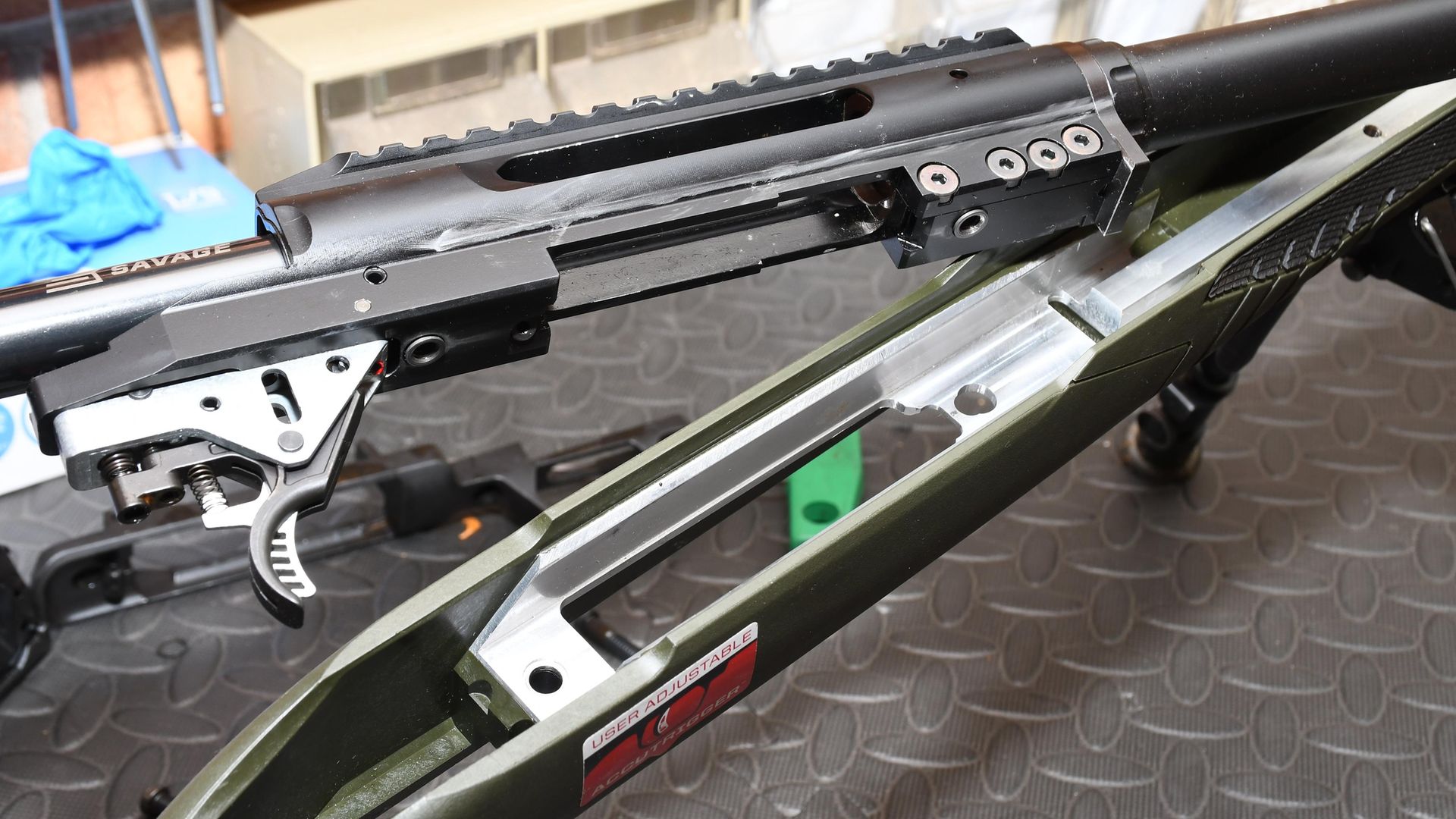 credit: Chris Parkin
credit: Chris Parkin
Performance on paper
Performance on target clearly preferred jacketed lead bullets for ultimate precision shooting, but all copper performed well enough for realistic hunting ranges. Savage barrels are hand-straightened, and this one showed no problematic thermal dispersion. They can be replaced using additional extenders, allowing their replacement within the action without specialist tools and enabling them to be swapped out multiple times if necessary.
The bolt head is removable and all that’s required to strip the components is an Allen Key. You must remove the action from the stock, but a solid bedding block showing no action stress returned to zero within two cm@100m when removed and replaced for photographs on this rifle, which was definitely pleasing to me. Even if I’m not personally a barrel swapper, it demonstrates physical consistency in the assembly process and tolerances as well as making future calibre changes or just a re-barrel very simple. Group sizes were notably better with lead core bullets than all-copper, and this is perhaps also off-set by the fact that both options available at the time were match and not hunting rounds in the former, with only hunting in the latter. Some velocity is lost in the shorter barrel, but all still perform appropriately given this factor over the usual figures quoted for 22-24” barrels.
Ammo | Measured
velocity
(fps) | Muzzle
energy
(ft/lbs) | Group
@ 100m
(mm) | M.O.A |
Norma
Match
130gr | 2733 | 2156 | 19.1 | 0.7 |
Hornady
ELD-M
140gr | 2589 | 2084 | 13.1 | 0.5 |
Hornady
Outfitter
GMX
120gr | 2831 | 2136 | 32.0 | 1.2 |
Hornady
TAP GMX
240gr | 2621 | 2136 | 31.0 | 1.2 |
Barnes
Vor-TX
120gr | 2867 | 2190 | 36.4 | 1.4 |
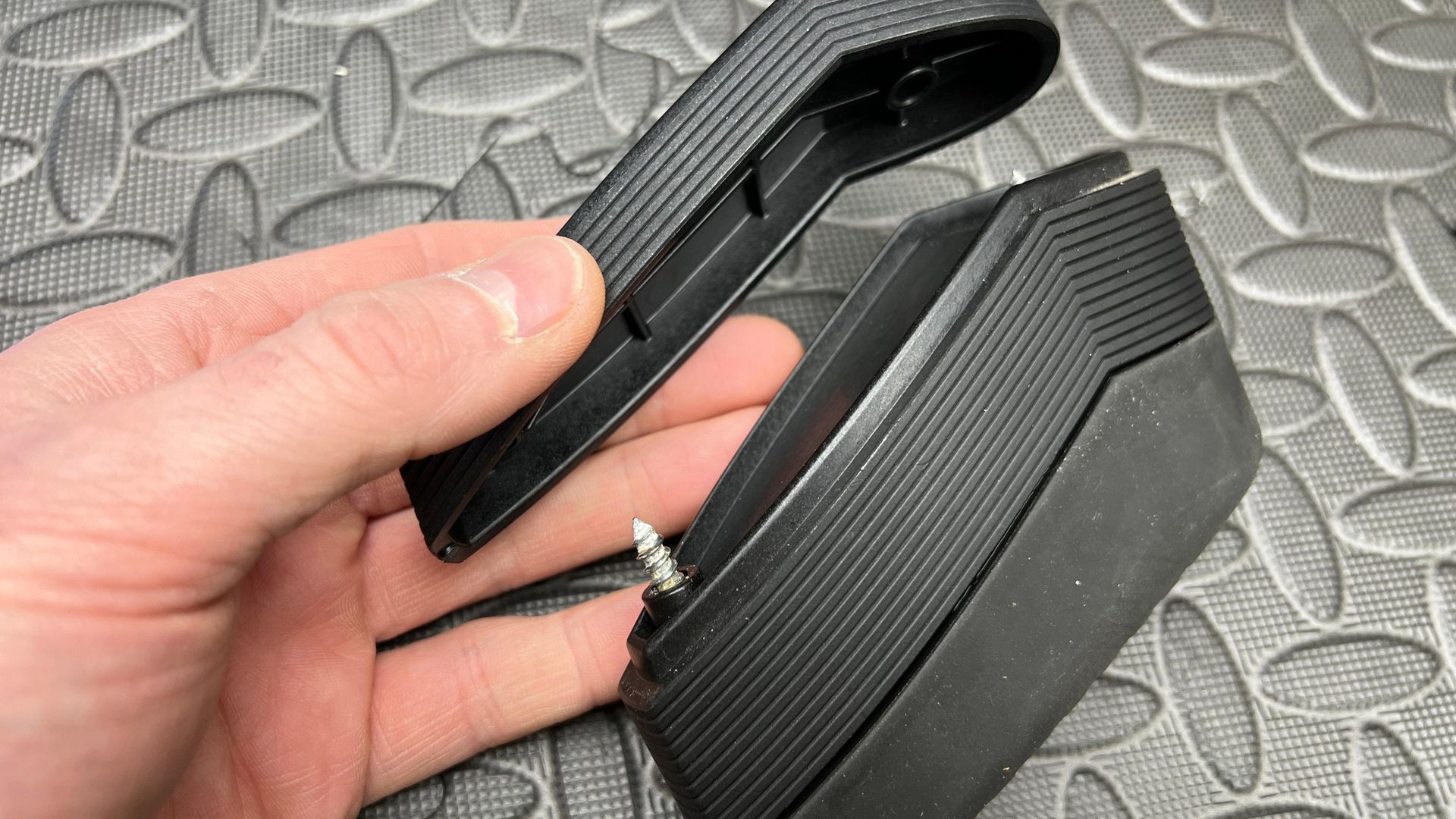 credit: Chris Parkin
credit: Chris Parkin
Conclusion
Now, the bottom line. Savage have made very accurate and consistent rifles for decades, yet never seem to have carried huge appeal in the UK, often being considered a little bulky and lacking in mechanical finesse compared with similarly priced European models. This rifle has totally altered my perception of the company throughout.
Their technical approach to bulk manufacturing and reliable long service life and warranty has suddenly dovetailed with a more elegant design, both visually and mechanically. The combination of locking mechanism and barrel change may not be unique, but like all design methodology it has evolved into a very competent rifle.
In short, I like it for its brave styling coupled with 100% delivery of promises, both operationally and on target. Were the seasons different and time/ammo in shorter supply, this rifle would have no problems shooting long range. It’s both accurate and consistent. Above all, it’s pleasant to use and rather than just shouting ‘straight-pull speed,’ offers an alternate, different design to entice uses away from market stalwarts. It’s no longer that slightly lesser or inferior option; it’s a really impressive new front runner.
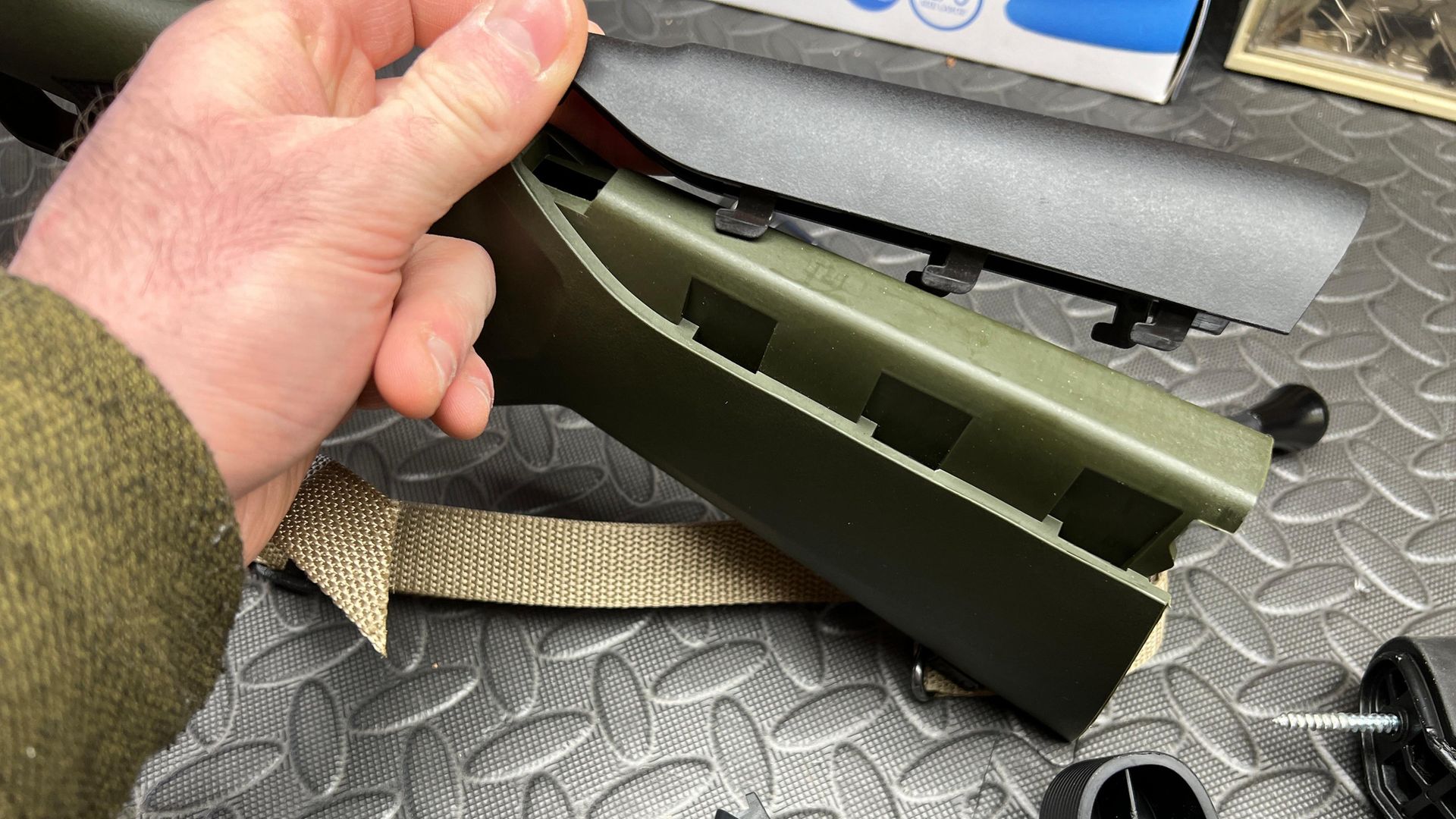 credit: Chris Parkin
credit: Chris Parkin
NB: It’s a good point to mention that although many comparisons are drawn against the Blaser as the most familiar straight pull rifle, this and the Savage are broadly separated by price. I think it’s fair to say why both are good designs, and I can only compare them positively. Both offer appreciable benefits at their price points drawn from their intelligent design, and I can appreciate the benefits of both without being elitist about the Blaser or dismissive of the Savage. Each does what it says it will and is a well-engineered rifle, rather than just an untrustworthy advertising adventure.
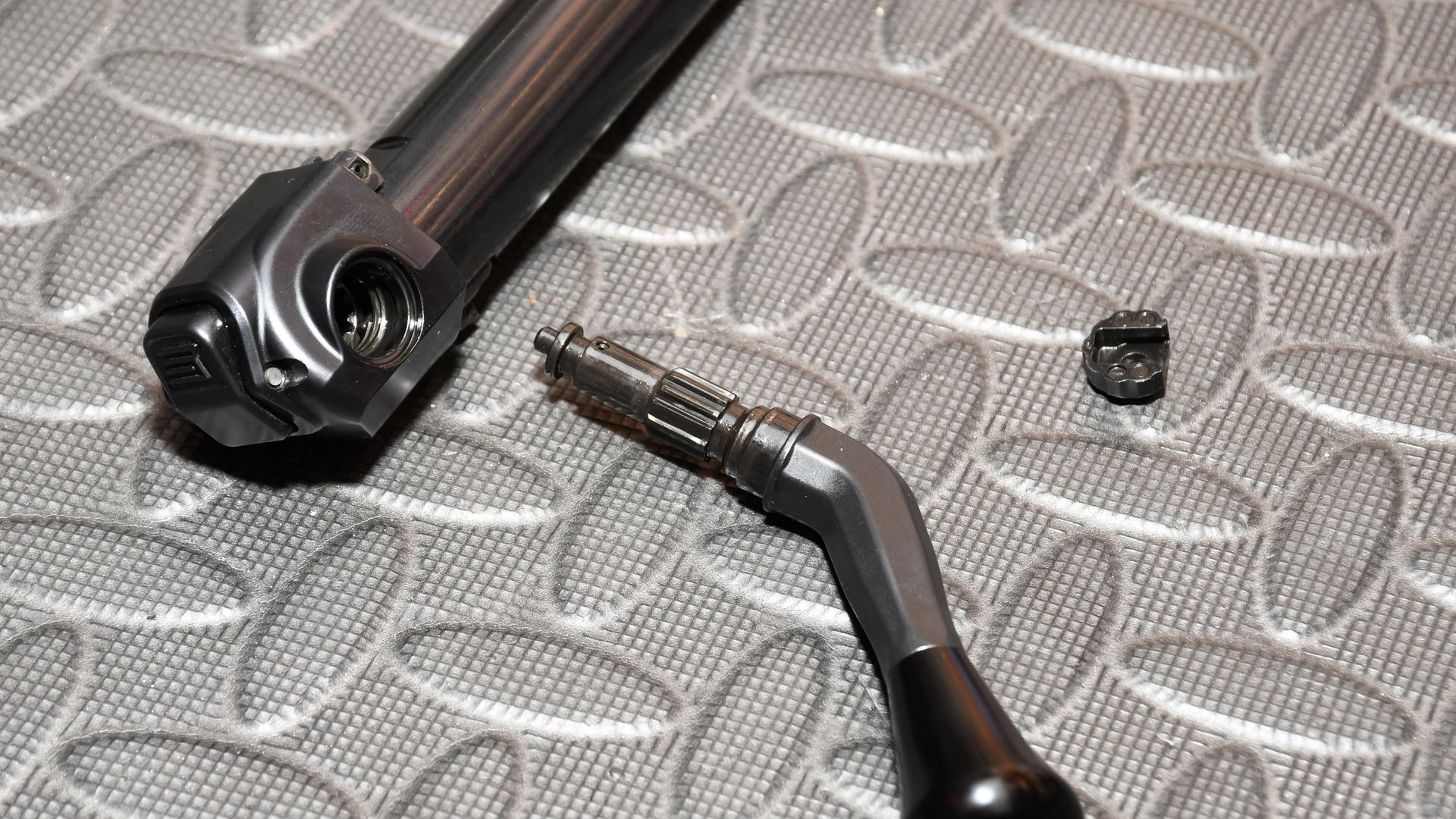 credit: Chris Parkin
credit: Chris Parkin
TECH SPECS
Calibre: 6.5 Creedmoor, 308, 30-06 and 300 Win Also available
Barrel length: 20”/510mm
Overall Length: 41.75”/1060 mm
Length of Pull: 13.6”/347mm (depending on spacers used)
Overall Weight: 4.05 kg/8.9 lbs
Magazine capacity: 4+1
Stock Material: Polymer with internal aluminium spine and action inlet
RRP: £1,899
Contact: Edgar Brothers